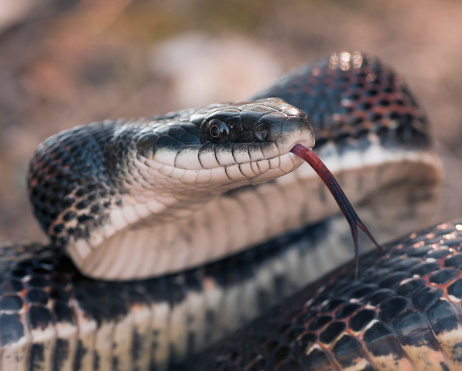How to Spot a Black Rat Snake

The black rat snake (Elaphe obsoleta) is also called a pilot black snake or usually just a black snake. The snake loves woody locations and is quite a climber as it can reach big trees without using the branches. The black rat snake is normally calm and non violent but might bite if scared, cornered or mishandled. It is wise to keep young children away from the snake as their bite is quite harmful. You can follow a few simple techniques in order to spot a black rat snake.
Instructions
-
1
Getting started
Find the length of the black rat snake. Be aware of the fact that adults range between 42 to 72 inches and the biggest is 101 inches long. It is officially recorded as the longest snake in North America. You should be able to check the colouration of the adult snake. The top seems to be a shiny black with a faint blotched structure which can be viewed in bright light. Below the chin and throat they are white, which can get dark or cloudy gray as you follow the path of the reptile’s belly. -
2
Colouration of black rat snakes
You should see the colouration of young or little black snakes. They must be blotched against a gray surface and can be usually identified as another species. As a result, carefully look at their colour in order to spot the right black snake. You can search for these reptiles in different areas of the eastern United States. -
3
Location and behaviour
Black rat snakes are mostly found in New England, Georgia and also in Iowa. It prefers to live in areas with big trees and is attracted to farms as well. They are normally responsible for raiding hen houses as once they get inside, they can wreak some serious havoc. On the other hand, check the black snake’s defensive behaviour as well. If it feels threatened, it might change its body into kinks and fake death in front of a predator. This is often a good way to spot a black snake quite easily.



